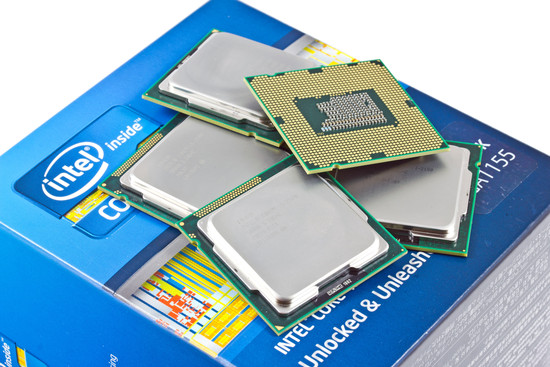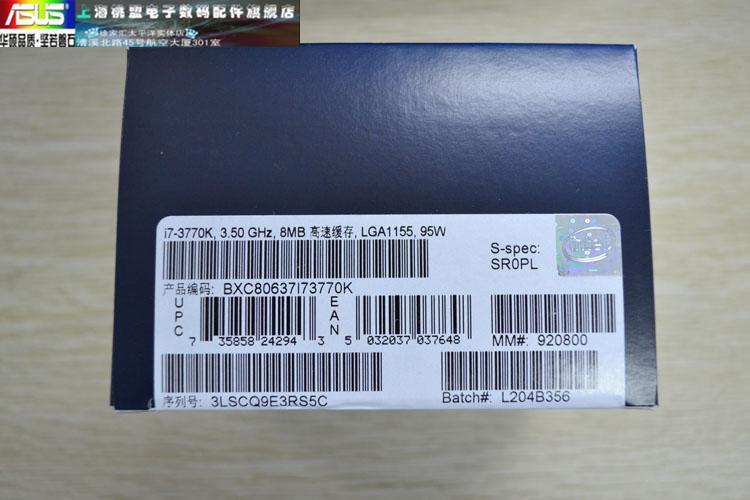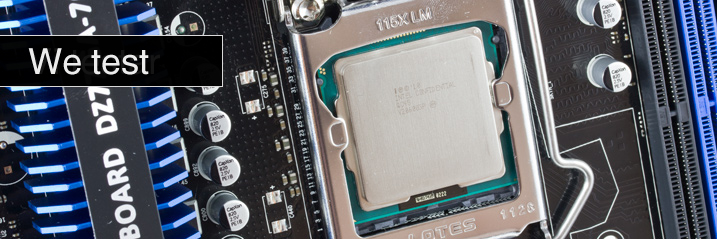The truth behind Ivy Bridges TDP value
The first consumer samples from Intel’s new processor family Ivy Bridge is as we uncovered earlier being shipped with a TDP value of 95W. This is a well thought out strategy according to the processor giant, despite that the models which is being launched has a TDP value that never exceeds 77W.
Today Intel is launching their third generation Core i architecture, none of these will have a greater TDP value than 77W, which also include the most powerful quad core models and Hyper-threading like the flag ship Core i7-3770K. Most ironic is that the processors, at least the top models with a 77W TDP will be sold with a specified TDP value at 95W.
The reason for this according to Intel themselves is that they have chosen to to uphold the maximum TDP value in the product segment (the LGA1155 platform). Even though the processors will be working with a maximum TDP value at 77W, many times even lower.

Intel leaves the door open for Ivy Bridge processors with six cores?
The reason to Intel’s confusing and odd behaviour, which is mildly put, is supposed to be many. First of all Intel means that through keeping a specification of 95W on the new Ivy Bridge processors they leave the door open for product launches within the family in the future. This is something that we find a little extra interesting since this would make it possible to not just turn up the clock frequencies quite a bit, but mabye even keep the door open for completely new models equipped with, lets say six cores instead of four. Although this is pure speculations, since we haven’t got any concrete information that any Ivy Bridge models with six cores should be under development, but there is certainly room for expansion within the Ivy Bridge architecture.
Intel is concerned about greedy motherboard manufacturers
The second and most relevant reason to keep their TDP value at 95W though, is the compatibility between the different processor families within the LGA1155 platform. Intel is concerned that motherboard manufacturers will see oppurtunities to develop products with VRM and power supply sections that will only be able to handle LGA1155 processors with a maximum TDP of 77W, which is something that would make the motherboards incompatible with several processor models from the LGA1155 platform, maybe even future models from Intel. By setting what they call a ”segment TDP” at 95W Intel gives the signal to their motherboard partners that all the motherboards should be built with VRM sections that is capable of running processors with 95W TDP.
The bottom line is that Intel will sell Ivy Bridge processors with a 95W TDP that really is manufactured and developed for a maximum TDP value of 77W. This means that Ivy Bridge will NOT consume more than 77W. It also looks as this is something that Intel plans to continue with in the foreseeable future.
 The Core i7-3770K box says 95W TDP, when in fact the processor runs with a TDP value at 77W.
The Core i7-3770K box says 95W TDP, when in fact the processor runs with a TDP value at 77W.
Although we can understand the company’s concern regarding incompatibilities within the LGA1155 platform, this feels like a process that’s not only likely to decieve it’s consumers, but also a way for Intel to undervalue their own products.
We now feel sufficiently ready with the tour of Ivy Bridge, and now it is time to move on to what is perhaps the most interesting: the test results! It will also be interesting to see how the power consumption is on in the new Core i7-3770K after the whole 95W incident, or what we should call it…
























Great review guys, i would really love to see you do much more of them =]
A really great review, good job. Waiting to get my hands on it… but don’t know when it will arrive in Brazil
Glad you liked it 🙂
We hope the new translators will have time for more of these.
You used DDR3-1333 for AMD APU when it’s known that those processors need faster RAM to reach top performance, unlike Intel’s which don’t scale up accordingly. As it is, this is a very Intel-biased review.
[quote name=”Taki R”]You used DDR3-1333 for AMD APU when it’s known that those processors need faster RAM to reach top performance, unlike Intel’s which don’t scale up accordingly. As it is, this is a very Intel-biased review.[/quote]If you’re talking about CPU performance, the difference is very much negligible. I can agree however if we’re talking GPU-performance, where may I add, even Ivy Bridge HD 4000 benefits from higher RAM-clocks as well so it’s pretty much apples-to-apples in that regard. We will be revising our testing methodology during the summer, so we’ll be taking all of these things into close consideration… Läs hela »
It seem Intel will beat AMD more with this line of new generation processor. It is faster and consume less power than sandy bridge and trinity. Core per core / clock per clock basis.
I really like to know though the performance and efficiency compare to AMD trinity.
É realmente incrível todo esse progresso/evolução da INTEL.
BRASIL – CRATO – CEARÁ
É realmente incrível todo esse progresso/evolução da INTEL.
BRASIL – CRATO – CEARÁ
What happens if I put a 125w TDP CPU on a 95w motherboard? If I have a quad-core CPU and disable 2 cores will my CPU fit in the 95w TDP?